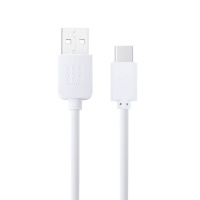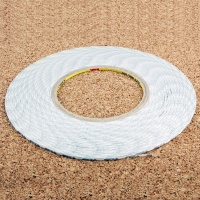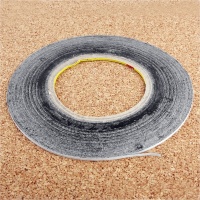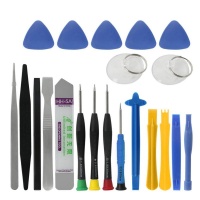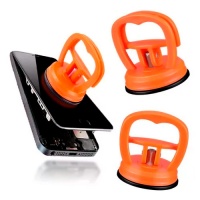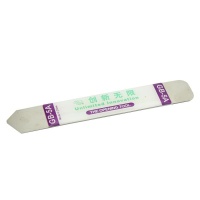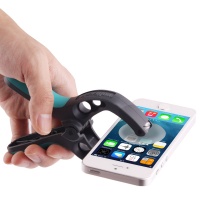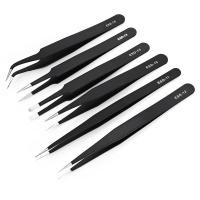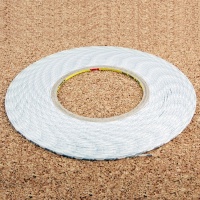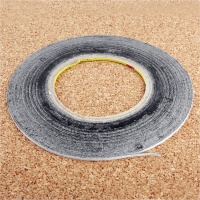 Repair parts Xiaomi 13T
Repair parts Xiaomi 13T

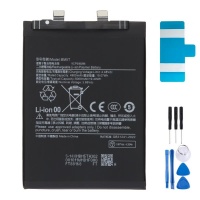
Receive it on tomorrow tuesday 06 january

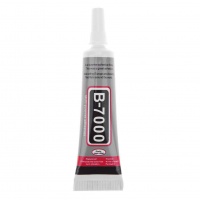
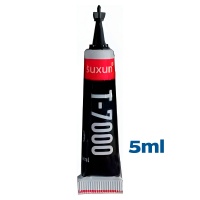
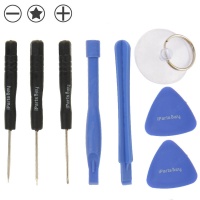
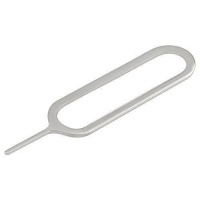
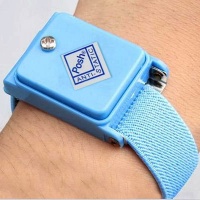
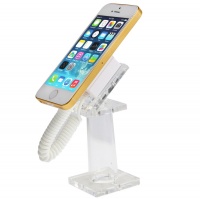
The Definitive Guide and Technical Repair Report for the Xiaomi 13T: Analysis, Diagnosis, and Feasibility
Welcome to iLevante.com, your trusted partner for all the spare parts and components your smartphone needs. This document transcends a simple repair guide for the Xiaomi 13T; it stands as a comprehensive technical report designed to empower the owner. The decision to repair a high-end device is not merely a solution to an inconvenience like a broken screen or a depleted battery. It is an act of consumer sovereignty: an economical, sustainable, and intelligent choice that challenges the accelerated replacement cycle.
The objective of this report is to equip the Xiaomi 13T user with the in-depth knowledge necessary to: first, diagnose problems with almost professional precision, unequivocally distinguishing between hardware and software faults; second, understand the spectrum of available spare parts and their implications on performance and cost; third, evaluate with concrete data the economic feasibility of a repair versus buying a new or second-hand device; and fourth, assimilate the best technical practices of the process, including a realistic understanding of the limitations, such as the inevitable loss of the IP68 water resistance certification.
The Case for Repair: A Multidimensional Analysis
Before diving into the technical aspects, it is fundamental to establish the value framework that underpins the decision to repair. This value manifests in three key dimensions: economic, ecological, and practical.
The Economic Factor: Smart Savings and Return on Investment
The most direct argument for repair is economic. The acquisition of a new handset like the Xiaomi 13T represents a significant investment, with official prices exceeding €650. [1] In contrast, most common repairs have a cost that is only a fraction of that value. For example, a professional battery replacement can range from €50 to €150, while the cost of the spare part for a DIY repair can be as low as €13. [2, 3, 4]
Beyond the immediate savings, repair preserves the "residual value" of the device. A high-end handset like the 13T is an asset. Discarding it for a repairable fault is equivalent to a total loss of the initial investment. By repairing it, you not only solve a problem but also extend the useful life of a valuable asset, maintaining its functionality and postponing a much larger outlay.
The Ecological Imperative: Your Role in the Fight Against E-Waste
The decision to repair has a profound and positive environmental impact. Annually, approximately 5.3 billion smartphones are discarded, contributing to a global e-waste crisis. [5] The manufacture of a new phone is a resource and energy-intensive process. About 80% of a smartphone's carbon footprint is generated during its production, a phase that depends on the extraction of minerals often linked to conflict and with a high ecological cost, such as coltan, gold, and lithium. [6]
This mining not only devastates ecosystems and contributes to deforestation but also generates toxic waste such as cyanide and mercury. When a phone is disposed of incorrectly, heavy metals like lead and cadmium can leach into the soil and groundwater, causing long-lasting pollution. [5, 6] Opting to repair the Xiaomi 13T is a direct and tangible action within the circular economy. Each repair extends the life of the materials already extracted, reduces the demand for new mining, and prevents a perfectly functional device from prematurely becoming hazardous waste.
The Practical Advantage: Data Preservation and Continuity
The cost of replacing a phone is not just monetary. There is a significant "transition cost" that is often underestimated. The migration of personal data, photos, contacts, applications, passwords, and, crucially, two-factor authenticators, is a tedious process prone to information loss. [7] A successful repair completely bypasses this complication.
Furthermore, repairing the device allows you to maintain familiarity with the operating system (MIUI/HyperOS), personalised settings, and the established workflow. It avoids the learning curve and reconfiguration that inevitably accompany a new handset, ensuring a frictionless continuity in daily use. [7]
Precision Diagnosis: The Key to a Successful Repair
A repair is only effective if the root cause of the problem is addressed. Buying a spare part is useless if the fault lies in the software. Therefore, an accurate diagnosis is the most critical step.
The First Filter: Hardware Fault or Software Ghost?
Many symptoms that appear to be hardware faults on the Xiaomi 13T can, in fact, be manifestations of software problems. Analysis of user forums and technical communities reveals a high correlation between operating system updates (MIUI and HyperOS) and the sudden appearance of issues like accelerated battery drain, overheating, intermittent audio failures, or Bluetooth disconnections. [8, 9, 10, 11] This suggests that new software versions can introduce bugs, driver conflicts, or low-level miscalibrations.
Before considering the purchase of any component, it is imperative to run a software diagnosis protocol:
- Simple Reboot: Turning the device off and on can resolve temporary faults and clear the system's cache memory. [12]
- System Update: Ensure you have the latest available software version installed, as it may contain patches for the detected problem. [13, 12]
- Application Review: Identify if the problem occurs with a specific application. An anomalous battery consumption by an app can be verified in `Settings > Battery`. [13] Clearing the cache of that application or reinstalling it can be the solution.
- Factory Reset: As a last resort, and always after making a complete backup of your data, a factory reset eliminates any software conflicts and returns the system to a clean state. If the problem persists after this step, the probability of a hardware fault is extremely high. [13, 12]
The Technician's Secret Menu: Mastering the CIT Menu
If the software diagnosis does not resolve the issue, the next step is to use Xiaomi's integrated hardware diagnostic tool: the CIT (Control and Information Tools) menu. This secret menu allows you to test the phone's physical components in isolation, providing a definitive verification of their status.
How to access the CIT Menu:
There are two main methods to invoke this menu:
- Method 1 (Phone Dialler): Open the "Phone" app and dial the code
*#*#6484#*#*. The menu will open automatically upon entering the last asterisk. [14, 15] - Method 2 (System Settings): Navigate to `Settings > About phone > Detailed info and specs`. Once there, repeatedly tap (usually five times) on the "Kernel version" option until the CIT menu screen appears. [16, 17]
Guide to Essential CIT Menu Tests:
The CIT menu presents a numbered list of tests. Each test ends with a "Pass" or "Fail" result, which the user must confirm. A "Fail" result is an unequivocal indicator of a hardware problem.
- Touch Sensor: This test displays a grid on the screen. You must slide your finger over all the lines and boxes. If the entire grid can be coloured in, the touch sensor is working correctly. Unresponsive areas indicate a fault in the digitiser. [14, 16]
- Display: The system shows solid colour screens (red, green, blue). This test allows you to visually identify dead pixels (black dots that do not light up) or stuck pixels (dots that remain a single colour). [14, 16]
- Speaker / Main Mic / Top Mic: For the speakers, the phone will play a sequence of numbers or tones that should be heard clearly. For the microphones, the user will be asked to speak near the corresponding holes; a bar on the screen should react to the sound. The absence of sound or reaction indicates a fault. [16, 18]
- Vibrator: Selecting this option should activate the phone's vibration motor. If no vibration is felt, the motor or its connection has failed. [16, 15]
- Proximity Sensor: This test is crucial. It displays a numerical value, typically "5.0". When you cover the proximity sensor (located at the top of the phone, near the earpiece), this value should instantly change to "0.0". If the value does not change or is erratic, the sensor is faulty or poorly calibrated. [19, 20]
- Keyboard test: Allows you to press the physical volume (up and down) and power buttons. The screen should register each press. If a button does not cause a reaction in the test, the corresponding button flex cable is damaged. [16]
The CIT menu is not just a diagnostic tool; it is a consumer defence tool. It allows you to generate an objective test that separates software problems from hardware ones. If a component passes the CIT test but continues to fail in normal use (especially after an update), the problem lies with Xiaomi's software. This allows the user to avoid unnecessary expense on a spare part and instead seek a software solution or report the bug to the manufacturer.
Detailed Catalogue of Common Faults on the Xiaomi 13T
Armed with the diagnostic methodology, we can address the most frequent faults of the Xiaomi 13T.
Audio Problems (Speaker and Earpiece)
- Software Symptoms: Sound is lost intermittently, especially when gaming or using certain apps; the volume is abnormally low on Bluetooth devices (a reported issue on handsets with MediaTek processors like the 13T's Dimensity 8200-Ultra); or the fault appears right after a system update. [8, 10]
- Software Solutions: Restart the device, check that "Do Not Disturb" mode is not active, review the MIUI equaliser settings, and for the specific Bluetooth issue, you can access "Engineer Mode" by dialling
*#*#3646633#*#*to manually adjust the Bluetooth audio volume parameters. [10] - Hardware Symptoms: Persistently distorted sound, with crackles or pops regardless of the application; total absence of sound from the main speaker; or a "Fail" result in the "Speaker" test of the CIT menu. [21, 18]
- Hardware Solutions: The first action is to use MIUI's "Clear speaker" function, which emits high-frequency sounds to expel particles. [13] If this does not work, you can try a careful external cleaning with compressed air. If the problem persists, the speaker module needs to be replaced.
Vibration Problems
- Software Symptoms: Vibration works for calls or alarms but not for third-party app notifications, or it doesn't work when the phone is in silent mode. With the latest versions of MIUI and HyperOS, this behaviour is often linked to the "Haptic feedback" setting, which may need to be explicitly enabled. [22, 23, 24]
- Hardware Symptoms: Total and absolute absence of vibration under any circumstances, including calls, alarms, and notifications. The definitive confirmation is a "Fail" result in the "Vibrator" test of the CIT menu. [15]
- Hardware Solution: Replacement of the vibration motor.
Proximity Sensor Failure
- Symptoms: The screen does not turn off during calls when you bring the phone to your ear (causing accidental presses with your face) or, conversely, the screen goes black when listening to a WhatsApp audio message and does not turn back on until it finishes.
- Common Causes: This is a historically common fault in Xiaomi devices. The causes can be: (1) Physical obstruction by a poorly designed screen protector or case; (2) Dirt or dust accumulated on the sensor; (3) Software miscalibration, often induced by an operating system update. [25, 26]
- Diagnosis and Solutions:
- Cleaning: Thoroughly clean the top bezel of the phone with a microfibre cloth. [27]
- Accessory Removal: Remove any case and screen protector and test again. Many low-quality tempered glass protectors interfere with the sensor. [25, 26]
- Test and Recalibration: Use the CIT menu test. If it fails, try the recalibration option that sometimes appears in the same menu. Alternatively, navigate to `Settings > Apps > System app settings > Call settings > Incoming call settings` and toggle the proximity sensor option off and on again. [19, 20]
- Replacement: If none of the above solutions work, the physical sensor is damaged and requires replacement.
Physical Button Failure (Volume and Power)
- Symptoms: The buttons do not respond to presses, respond intermittently, or one of the buttons is physically stuck, which can cause the phone to enter a reboot loop (bootloop) or constantly start in recovery mode. [28, 29]
- Diagnosis and Solutions:
- Cleaning: Dirt and debris can accumulate around the edges of the buttons, preventing them from working correctly. Try cleaning the contours with a soft-bristled brush and bursts of compressed air. [29, 30]
- CIT Test: Use the "Keyboard test" to verify if the system detects the electrical signal from the press. A failure here confirms a hardware problem. [16]
- Temporary Solution (Software): While managing the repair, you can enable software alternatives. The "Accessibility Menu" or "Floating ball" in MIUI/HyperOS allow you to control the volume, lock the screen, and turn off the device without using the physical buttons. [31]
- Definitive Solution (Hardware): The root cause of these faults is usually wear or damage to the flex cable to which the buttons are connected. Replacing this component, the "volume and power button flex", is the necessary repair.
The Repair Process: Technical Guide and Best Practices
Once the problem has been diagnosed and the correct spare part acquired, the success of the repair depends on the methodology and tools used.
The Technician's Arsenal: Essential Tools and Materials
Having the right equipment is not a luxury, but a necessity to avoid collateral damage during the repair. A basic but complete repair kit should include:
| Category | Tool/Material | Main Purpose | Sources |
|---|---|---|---|
| Opening | Heat gun or hair dryer | To soften the adhesive on the back cover and/or screen. | [32] |
| Suction cup | To create a small initial gap to insert picks. | [4, 13] | |
| Plastic picks (thin and sturdy) | To slide around the edges to cut the adhesive and separate components. | [32] | |
| Plastic spudgers | To disconnect flex cables without risk of short-circuiting. | [33, 34] | |
| Precision | Precision screwdriver set | Include Phillips #00 and Torx (T3, T4, T5) bits for internal screws. | [13, 33] |
| Anti-static tweezers (straight and curved) | To handle small screws and connect/disconnect flex cables with precision. | [32, 33] | |
| Sealing | Liquid adhesive (B-7000 or T-7000) | General-purpose adhesive for sealing the back cover or screen. | [32, 33] |
| Pre-cut adhesive gaskets | The best option for a uniform and precise seal of the screen frame. | [35, 36] | |
| Double-sided adhesive tapes | Specifically for securing the new battery in place. | [33] | |
| Safety and Cleaning | Isopropyl alcohol (>99%) | To clean old adhesive residue and surfaces before applying new adhesive. | [13, 32] |
| Microfibre cloths | Lint-free cleaning. | [32] | |
| Anti-static gloves | To prevent damage to components from electrostatic discharge (ESD). | [32, 33] |
The Water Resistance Challenge: The Truth About the IP68 Certification Post-Repair
It is essential to address one of the most important realities of modern smartphone repair. The IP68 certification, which guarantees resistance to water immersion up to 1.5 metres for 30 minutes, is the result of a high-precision industrial sealing process. Once the Xiaomi 13T is opened, whether by a professional technician or in a DIY procedure, this factory certification is permanently and irretrievably lost. [37] No unofficial repair shop can guarantee the restoration of the device's immersion capability.
The realistic and professional goal of a good reassembly is not to make the phone able to swim again, but to achieve a robust seal that effectively protects it against dust, rain, and accidental splashes. The quality of this new seal depends directly on the technique and materials used.
Recommended procedure for an optimal seal:
- Thorough Cleaning: After removing the old cover or screen, it is crucial to remove every last residue of the original adhesive from the chassis frame and the component to be installed. Use a plastic spudger and isopropyl alcohol to leave the surfaces perfectly clean and smooth.
- Prioritise Pre-cut Gaskets: The superior solution for sealing is the use of pre-cut adhesive gaskets, designed specifically for the Xiaomi 13T chassis. These strips have the exact thickness and shape to fit into the frame channels, ensuring a uniform and consistent barrier, especially when reinstalling the screen. [35, 36]
- Application of Liquid Adhesive: If pre-cut gaskets are not available, B-7000 (transparent) or T-7000 (black, ideal for dark frames) adhesive is the alternative. A very thin and continuous line should be applied directly into the frame channel. It is vital to avoid excess glue, as it could seep into internal components like the cameras or speakers, or make future repairs more difficult.
- Curing and Pressure: Once the component (cover or screen) is in place, gentle but constant and uniform pressure should be applied around the entire perimeter. You can use specific mobile phone repair clamps or, at home, place the phone between two heavy books on a flat surface. The adhesive needs several hours (a minimum of 4-6 hours is recommended, ideally 24) to cure completely and reach its maximum adhesive strength.
Understanding this limitation is a key factor in the decision to repair. The user must weigh the economic and ecological benefits against the loss of the water-resistance guarantee for immersions.
Economic Analysis and Final Decision: Repair vs. Buy
The final decision comes down to a comparison of costs and benefits. To facilitate this analysis, a table is presented that consolidates the current market prices for the Xiaomi 13T in Spain.
The Xiaomi 13T Market in Spain (Data Q3-Q4 2024)
The following table offers a clear view of the costs associated with each scenario, allowing for an informed evaluation.
Table 5.1: Cost Analysis: Repair vs. Purchase (Xiaomi 13T in the Spanish Market)
| Component / Fault | Spare Part Cost (DIY) | Professional Repair Cost (Estimated) | New Xiaomi 13T Cost (Official) | Used Xiaomi 13T Cost (Mint Condition) | Used Xiaomi 13T Cost (Good Condition) |
|---|---|---|---|---|---|
| Complete AMOLED Screen | €37 - €84 [38] | €93 (Official) - €120 (Third-party) [38, 39] | €659.99 [1] | €274 [40] | €244 [40] |
| BM5T Battery (5000mAh) | €13 - €22 [4, 41] | €55 - €78 [3] | €659.99 [1] | €274 [40] | €244 [40] |
| USB-C Charging Port | €3 - €15 [42, 43] | €29 - €60 [44, 45] | €659.99 [1] | €274 [40] | €244 [40] |
| Back Cover (Glass/Leather) | €10 - €20 [4, 46] | €40 - €60 | €659.99 [1] | €274 [40] | €244 [40] |
Note: Prices are estimates based on available data and may vary. The professional repair cost includes the part and labour.
The Verdict: When is it Cost-Effective to Repair?
The analysis of the table reveals clear conclusions:
- Highly Recommended Repair: For faults such as the battery, charging port, or back cover, repair is the most logical and cost-effective option. The total cost, even at a professional service, represents a small fraction of the phone's value, whether new or second-hand. Replacing the device for one of these faults would be economically irrational.
- Generally Recommended Repair: The screen is the most expensive repair. However, even the cost of an official professional repair (approximately €93) is significantly lower than the price of a second-hand handset in good condition (around €244). [38, 40] For the user who opts for DIY, the savings are even more drastic, with high-quality spare parts available for less than €40. [38] Therefore, in most cases of a broken screen, repair remains the smartest financial decision.
- When to Consider Replacing: The balance may tip towards buying a new device in two specific scenarios:
- Catastrophic Damage: If the phone suffers multiple serious faults simultaneously (e.g., broken screen, water-damaged motherboard, and bent chassis), the cumulative cost of repairs could exceed 60-70% of the value of a functional second-hand model. At this point, investing in a replacement becomes more sensible. [2]
- Software Obsolescence: If the Xiaomi 13T stops receiving security and operating system updates, and the user requires more modern features or compatibility with new applications, buying a newer model may be justified, regardless of the current device's physical condition. [2]
An interesting point that emerges from the analysis is the price difference between official Xiaomi repairs and the third-party market. The cost of €93.29 for a screen at the official service contrasts with the €36.79 for a similar quality spare part in shops like iLevante.com. [38] This indicates that the official service not only charges for labour but also applies a considerable margin to the part. This presents the consumer with a clear choice: pay more for the peace of mind and the manufacturer's warranty, or take a calculated risk with a DIY repair or at a trusted workshop to achieve substantial savings.
The Future of Your Xiaomi 13T is in Your Hands
This report has exhaustively broken down the repair process for the Xiaomi 13T, from diagnosis to economic analysis. The key findings are unequivocal:
- Undeniable Feasibility: Repairing the Xiaomi 13T is not just a possible option, but in the vast majority of common fault scenarios, it is the overwhelmingly smarter decision from an economic, ecological, and practical perspective.
- The Power of Diagnosis: The ability to differentiate between a software fault and a hardware fault, primarily through the strategic use of the CIT menu, is the most powerful tool available to the user. This knowledge prevents unnecessary expenses and ensures that only what is truly broken is repaired.
- Quality as a Decisive Factor: The long-term success of a repair depends on two crucial factors: the quality of the chosen spare part (always prioritising Original or OEM options over low-quality generic alternatives) and meticulous attention to detail during reassembly, especially regarding the device's seal.
Armed with the information contained in this report, the owner of a Xiaomi 13T ceases to be a passive consumer at the mercy of product cycles and opaque repair costs. They become an informed agent, capable of making calculated decisions that benefit their wallet and the planet. The choice to repair is, ultimately, an assertion of control over one's own technology.
At iLevante.com, our commitment is to be your partner in this process. We provide you not only with the highest quality components for your Xiaomi 13T but also with the expert knowledge and detailed guidance you need to use those parts with confidence and success. Repairing is a smart, economical, and sustainable option. 🌍

